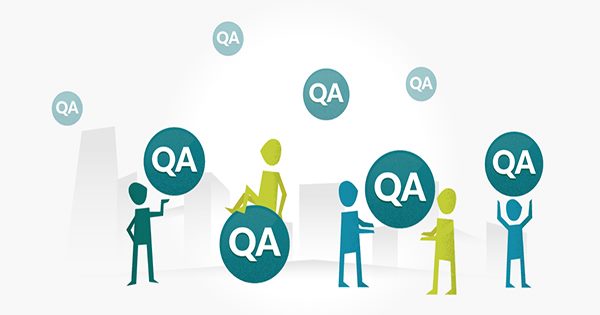
Famous Cross Platform Application development Tool
Definition: Cross-platform App Development
A framework that allows a mobile app to run on various platforms, such as Android, iOS, and Windows, is known as cross-platform. Developers only have to write the code once, and they may run it on any platform they desire.
Cross-platform development is a systems engineering technique that results in a mobile application that runs on many mobile operating systems and platforms without the need to recode for each native platform. The time, effort, and money required to produce the same program if it was developed especially for each native platform and Operating System are reduced as a result of the reduced code requirement.
Benefits of Cross-Platform App Development
-
Development Costs Are Lower
The principle of cross-platform software development is "write once, run everywhere." The cost of development can be reduced by using reusable scripts and developing agile apps using tools. As a result, there is no better approach to boost your business across numerous platforms and tools at a low cost than to use cross platform apps.
-
Better Maintenance and Integration
Cross platform development tool makes it easier to maintain and dispense codes because there's only one built app that works across all platforms. Updates can be synchronized quickly across all platforms and devices, saving time and money. Moreover, if a bug in the shared codebase is detected, it should only be patched once. Developers may be able to save a significant amount of time and money in this manner.
-
Reusable Code
Another advantage of this platform is that the code may be reused. Instead of generating new code for each platform, developers can reuse existing code. Because it minimizes repetition in the work of developing codes, this saves time and resources.
- Cloud Integration
Mobile apps that run on many platforms are fully interoperable and can take advantage of numerous plugins that are connected with cloud settings. To put it more simply, by coordinating the single source code with various plug-ins and extensions, the app's scalability and usefulness are enhanced.
- Uniform Design
Users can recognize and anticipate user interface (UI) features on a variety of platforms. As a result, for any app or product, User Experience (UX) is critical. When working on many apps, it might be difficult to keep track of all of the different development projects. It enables designers and developers to create a consistent user experience for application users.
Famous Cross Platform Tools
1. Flutter
Flutter is a cross-platform app UI development toolkit of Google. It is a reactive framework; designers do not have to manually change the UI content. It also offers a unique feature called hot reloading, which allows developers to double-check any minor code changes.
It's a great foundation for creating MVPs. Instead of wasting time and money on two different apps, you can rapidly create a Flutter mobile app that works on both Android and iOS. Take a Flutter Traininng Course to know the detail use of Dart Programming in Flutter, and the Flutter tool itself. Flutter is built on Dart, an object-oriented programming language that has proven to be relatively simple to learn for developers.
Flutter is distinguished by the fact that it employs the Dart programming language rather than JavaScript. Flutter developers can view changes in code in real time because to the hot-reload functionality. Flutter allows developers to create groundbreaking applications for the Furchisa OS in addition to Android and iOS.
4. React Native
React Native is a relatively new framework, but it is already the most popular cross-platform framework in the world. It provides native building components, making the application's User Interface look almost identical to that of a native program. You also have the option of using native language components, such as Swift, Java, or Kotlin. When working with performance critical elements this is extremely useful.
This cross-platform app framework's primary selling point is that it combines the best features of React.JS and JavaScript. Furthermore, developers have the option of writing some components in Java, Swift, or Objective-C.
3. Python
Python is a programming language which can be used to design APIs for mobile applications. This programming language allows mobile app developers to design programs that can operate on a variety of operating systems.
Python is suitable for a wide range of mobile applications. Python is simple to learn, interact with, and put into practice. Python is a beautiful programming language that allows you to write the same software with far fewer lines than PHP.
Python is widely used on the server side. This simple language is used by Tech giants like Instagram, Dropbox, Reddit, Pinterest, Mozilla, and Spotify for their complex back-end processes. This framework employs a unique collection of user interface instruments that interact with the same control components across platforms .Python is a very adaptable language. It may be used to create a variety of apps, ranging from web browsers to basic games.
4. Node JS
Node.JS is a cross-platform software framework based on V8. Its USP is that it converts JavaScript from a highly specialized language to a general-purpose language. It provides an open-source environment for the creation of scalable, server-side network applications.
The speed of Nod.JS increases as the V8 engine compiles JavaScript to machine code rather than running it as byte code. The framework contains a large library of JavaScript modules and can manage a large number of concurrent connections. This cross-platform app framework produces extremely responsive mobile apps.
Conclusion
Is cross-platform software development the way of the future? Nobody can say for sure. At the moment, we can see how quickly this technique is gaining popularity. More developers are seeing the advantages of cross-platform apps, such as reduced development time and cost, unified technology stacks, and so on. Cross-platform programming, on the other hand, is no longer a compromise.











